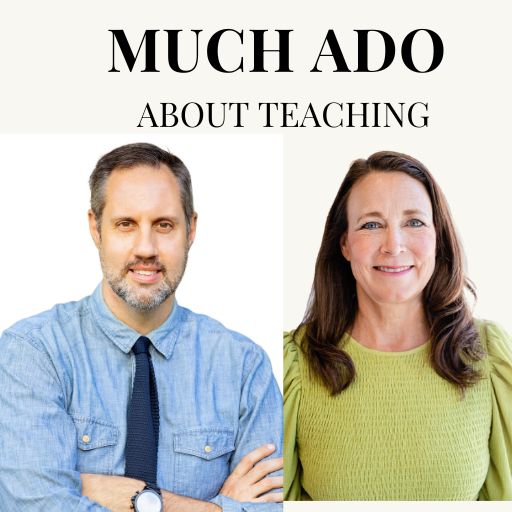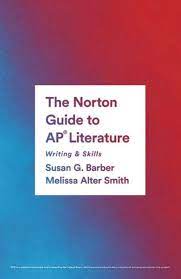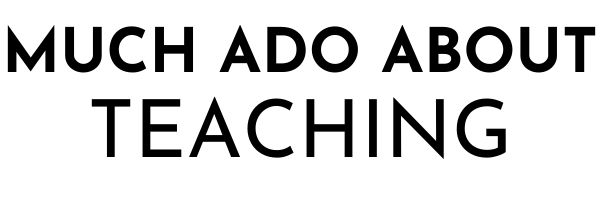Every now and then we all need a refresher.
All of us.
We need to step out away from the speed at which life whizzes past and avoid the monotony of death-by-checklist. We need to escape the din and discordance of bells dictating our lives, emails, GroupMes, Facebook boards, and Instagram reels by grounding ourselves in what is fundamental and returning to first principles that we essential.
That’s where I found myself this week, teaching a Romantic poetry unit. I began the unit showing my students that the Romantics were responding to changes in economy (the world become more industrial), in living environment (people moved from the countryside into urban areas), and in belief (The Enlightenment ushered in a scientific rationale that replaced a mythological one). Their art was a response to the era.
But I was really using the unit to teach students how to make the jump. By the jump, I mean how to gain one more point on their AP essays. That was my true focus, teaching the linear progression that one needs to develop a line of reasoning. The lessons started on the granular level by building substantial evidence and commentary. Then it expanded by uniting those smaller things to larger things, concepts to organize body paragraphs. It all ultimately went under the big tent of a thesis, the sheltering idea that covered and protected the entire essay.
THE ONE YOU FEED
There is the old parable of a grandfather talking with his grandson.
The grandfather says, “In life, there are two wolves inside of us which are always at battle. One is a good wolf which represents things like kindness, bravery, and love. The other is a bad wolf which represents things like greed, hatred, and fear”.
The grandson stops and thinks about it for a second then he looks up at his grandfather and says, “Grandfather, which one wins?”
The grandfather replies, “The one you feed.”
What was I feeding my students?
Teaching students a mental framework for argumentation is a worthy endeavor. Taking the smallest piece of evidence and putting it in relation to a larger body of understanding, and articulating it over and over again in a well-crafted essay is something marvelous, especially when it is executed by a 17-year old.
But it is also worth marveling at what makes “The World is Too Much with Us” so profound, without making an exit ticket a thesis statement or a body paragraph.
THE TEACHER APPEARS WHEN THE STUDENT IS READY
As I was nearing the end of the unit, I read something by Jim Burke, the extraordinary English teacher from California that recently retired. Reflecting on his 35-year career, Burke spoke about the fundamentals of his teaching:
For me and those who have influenced me most, English has always been a discipline of hope, one which, at its best, teaches us to understand and to tell a better story about ourselves, each other, and our country, one that “will give [students] power––power of voice, control of their growing ideas, and the sense of self that comes from participating in a group of peers who do not always share the same insights or interpretations but respect one another enough to gain richness from diversity” (Langer 157). This is what teaching English has done for me and what I hope I have taught my students.
Jim Burke
I had in my hands sublime poems that teach us how to be in harmony with what is natural. They show us that imagination can be a spiritual and artistic force for self satisfaction. Spontaneity was important to the Romantics because it was a pure and expressive form of emotion; it was a manifestation of the highest art. “Ozymandias” reminds us that the art of the sculptor endured, not the power and legacy of the ruler. In “The World is Too Much With Us” Wordsworth illuminates how we are unrelentingly “getting and spending,” that “we lay waste our powers.” This drive for materialism and consumerism has rendered us “out of tune” with the natural world.
While I taught those ideas, they were secondary to the wolf I was feeding. Those concepts were in the back seat, watching me and my classes navigate our way to better AP-style writing.
TEACHING IN A WAY THAT CHANGES LIVES
Burke took the unconventional path to becoming an English teacher. He barely graduated high school. He earned a D- in his senior English class and was enrolled in a remedial writing course the following year at his community college. Yet, reading changed his life.
It is what I did during those years after college that led me to become an English teacher: I read. And I read and I read. By the time I returned home to the US in 1987 (after a five-year stint in the Peace Corps), I wanted only to live the questions that literature was teaching me to ask and to share that passion with my students as an English teacher.
Jim Burke
Life-changing books, poems, and stories don’t always make students leave a classroom and shout a quote or idea with a barbaric yawp from the rooftops of the bleachers. Usually, its magic is a bit more subtle.
Any work worth its salt has the opportunity to presents students with an idea, a decision, a call to action, and a result.
Ideas: You can find a handful of them in the good stuff. These ideas capture the complexity of being human and teaches us how to understand “ourselves” and “each other” a little better.
Decision: Do we let those ideas seep into our conscious past the immediacy of the moment or do they become fleeting and ephemeral? We have the choice with anything we read to allow those ideas to linger and influence our thought. Do we take action on those thoughts? That is the decision we face with anything we read.
Action: This is where the decision turns into something tangible as behavior is altered in a small, but noticeable way. Thought has led to action and new patterns emerge.
Result: A change, however subtle, has consequence. A new life trajectory is being mapped, one that abandons an old way of thinking, with its old decisions and habits, in favor of something new.
As I write this, I imagine Burke in his early 20s, reading all those books in Tunisia while in the Peace Corps, doing these things. I see a face at times confounded, amazed, saddened, delighted, experiencing the full range of human emotions. I picture him deciding to take small actions that produce tangible results.
This is what I want for my students.
While I will still have a major essay or project near the completion of a unit to assess their growth and skill acquisition, that won’t be the final seal that closes it off. Instead, I want the final thing will be a powerful presentation of the ways in which a book can change their lives.
For example with The Great Gatsby:
ideas: look at the empty characters in The Great Gatsby who pursued pleasure and hedonism with reckless jubilance without any deep connection or concern for others. Is that who you really want to be?
Decision: what are more noble aspirations than the selfish pursuit of pleasure?
A call to action: find those that people and pursuits that are mutually beneficial, noble, and genuine.
A result: begin recognizing toxic people and situations for what they are. Discard them in favor of decent endeavors with noble people.
THE WOLF I WILL FEED
Looking back on it all I realize I was the one that was wrong the whole time. Teaching is not binary. We don’t have to choose skill development over artistic appreciation, or vice versa.
They are the same wolf.
Both have the capacity to advance students and change their lives.
Maximizing an AP score can change a student’s life, so can finding meaning in great poetry. This is the great challenge of teaching, to choose all the ways in which our lessons can be a force for self development, social justice, and collective understanding.
It is the other wolf we all need to guard against.
This wolf says that students are apathetic, administrators are too permissive, texts are too political, and cheating is rampant. It tells us that deep, passionate teaching is futile because no one cares, no one will reward it, and ultimately it will not make a difference if we mail it in or give our best.
As Wallace Stevens writes in his poem “Gubbinal”
Have it your way.
The world is ugly,
And the people are sad.












